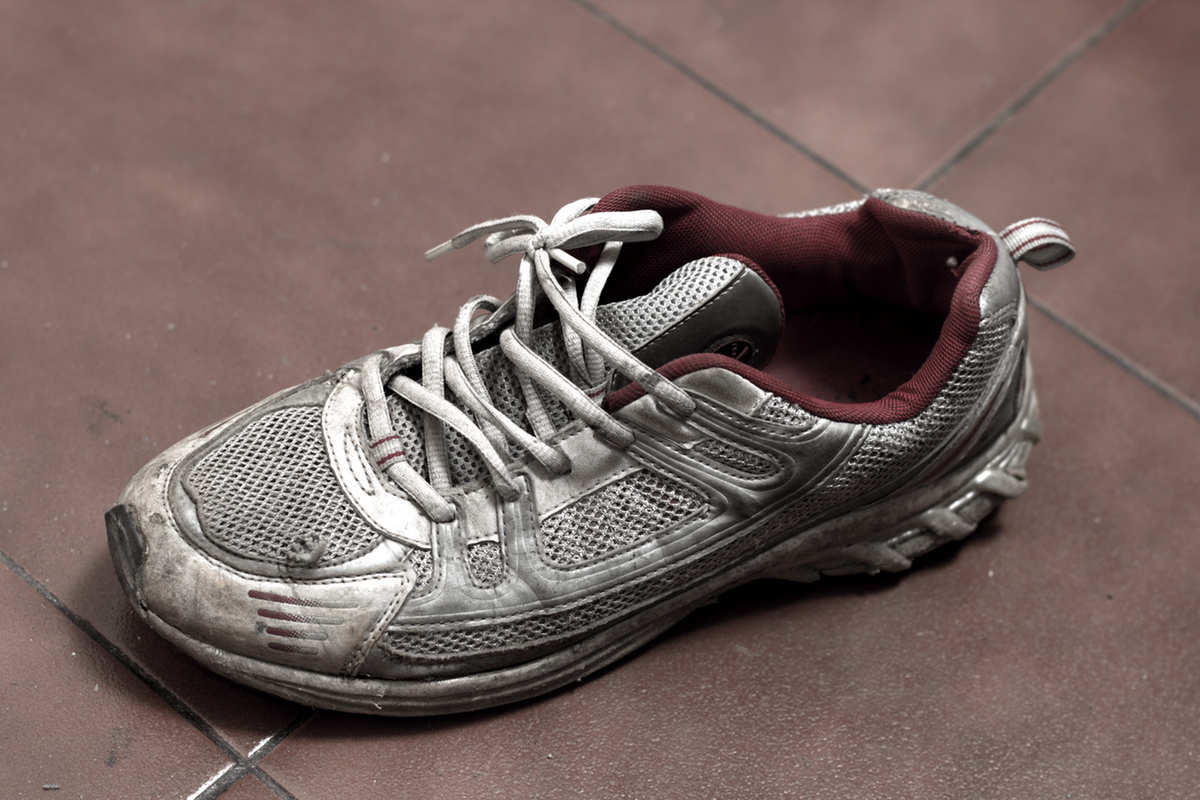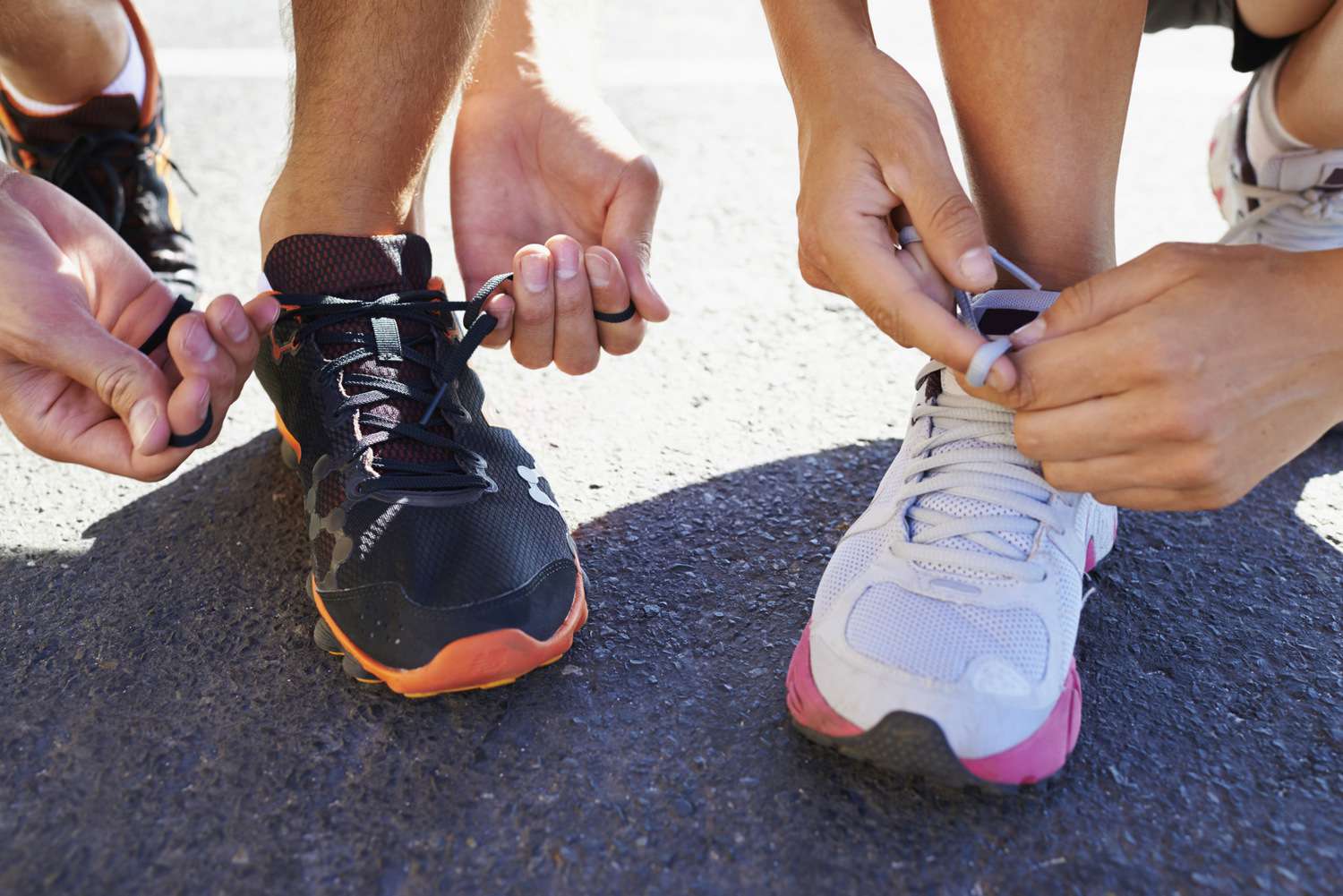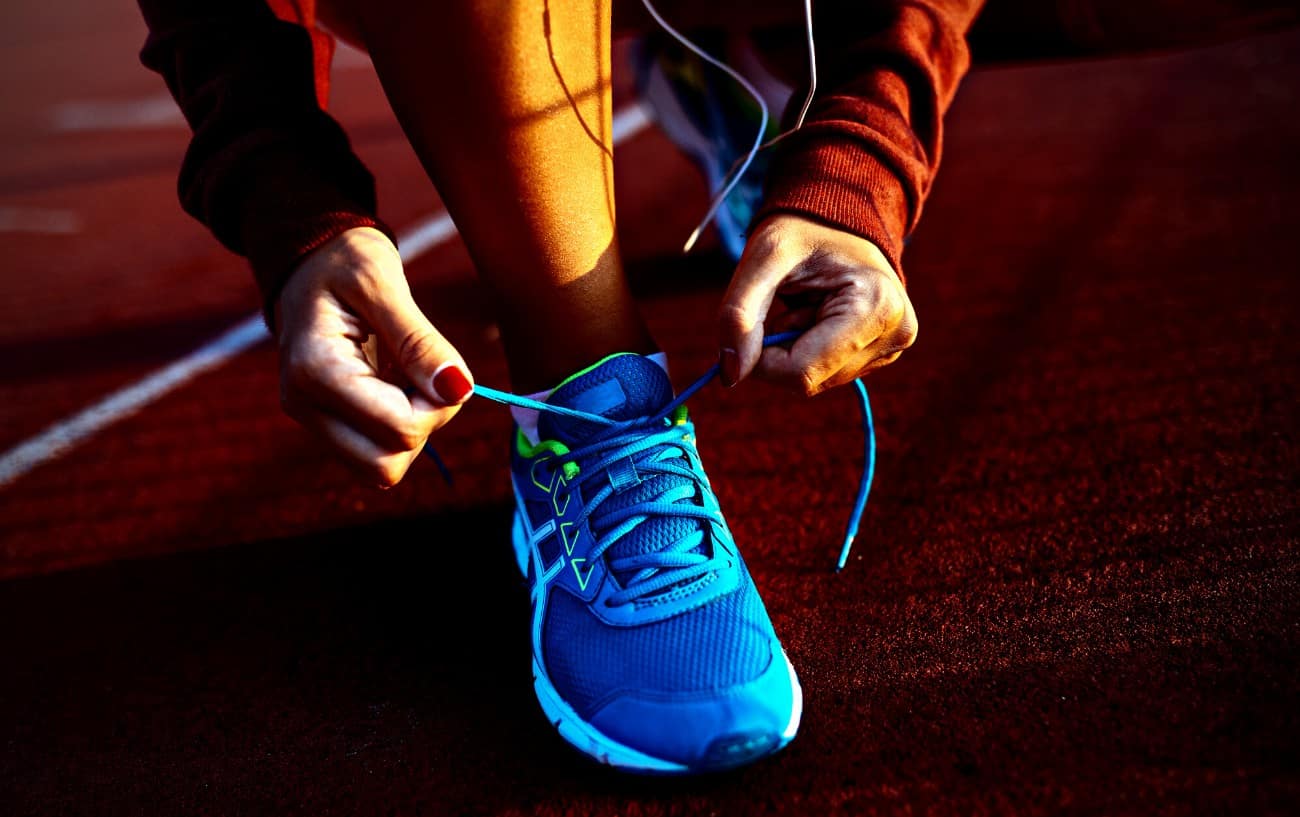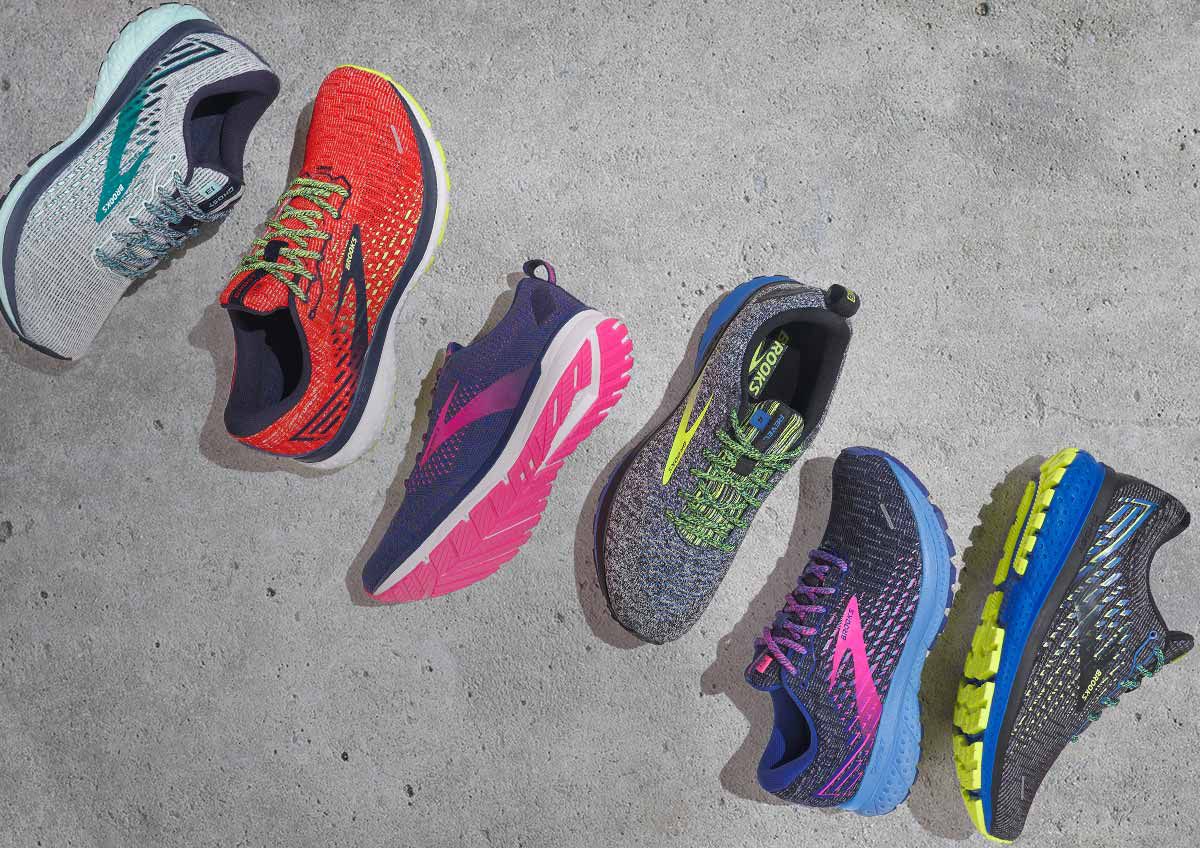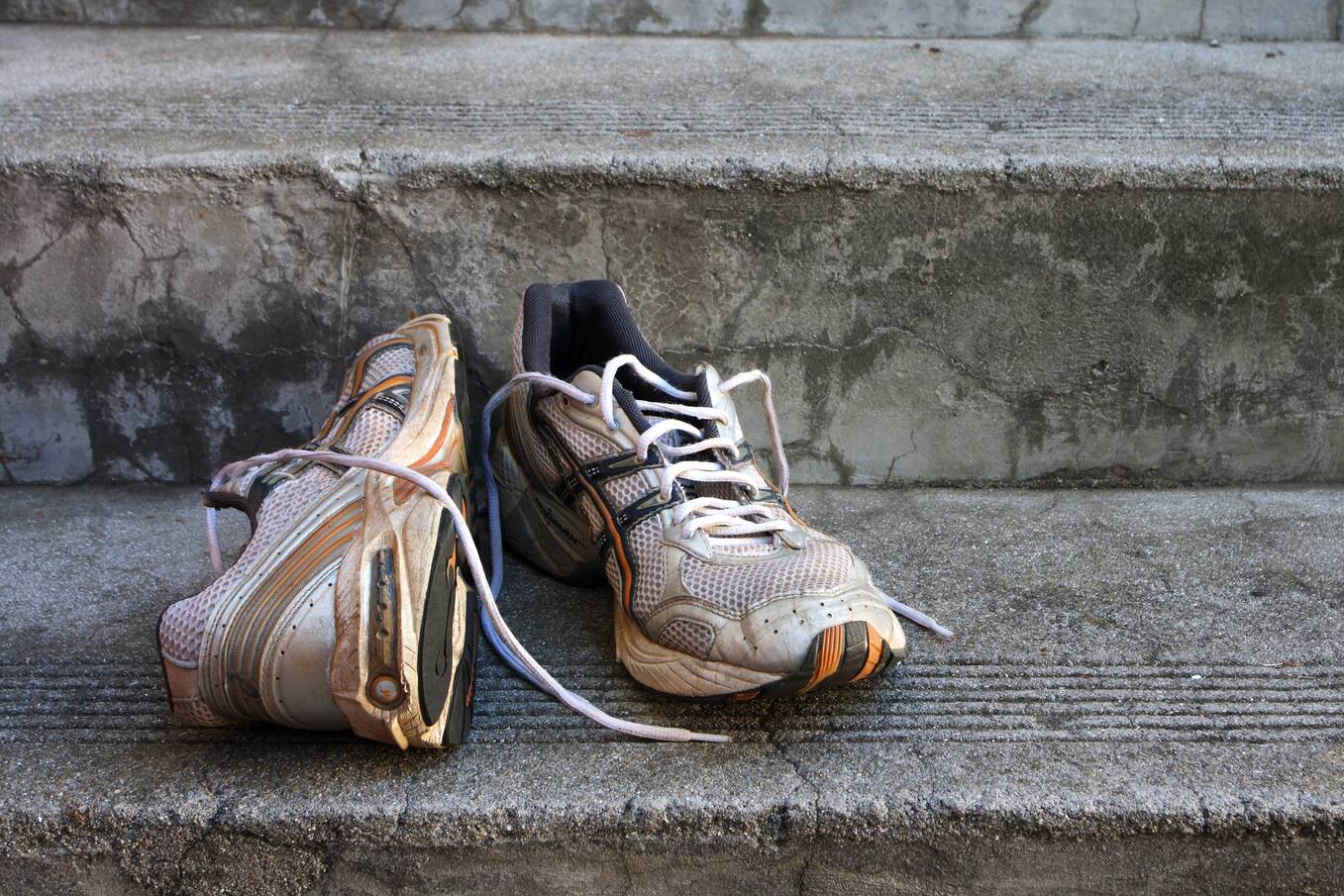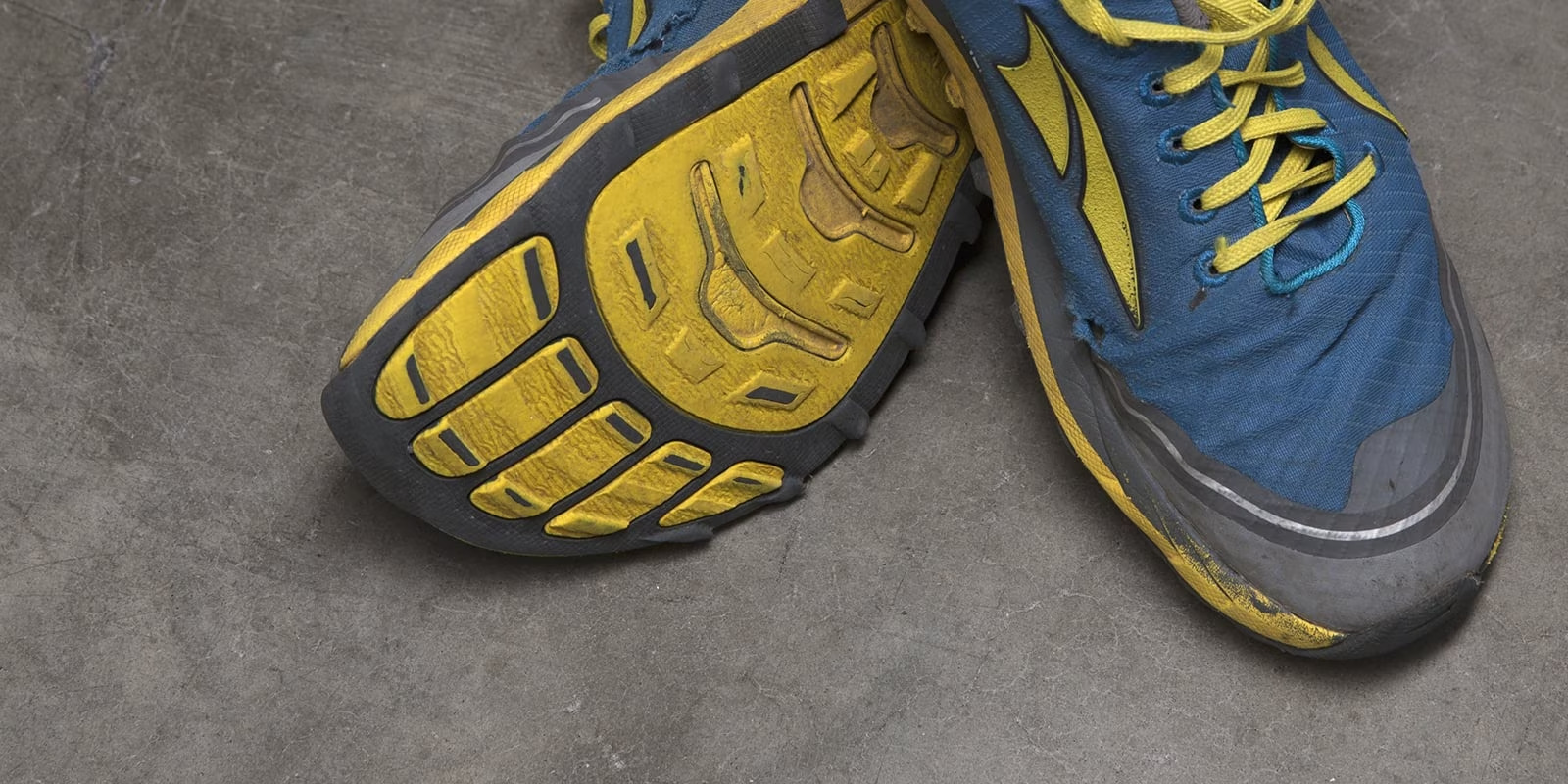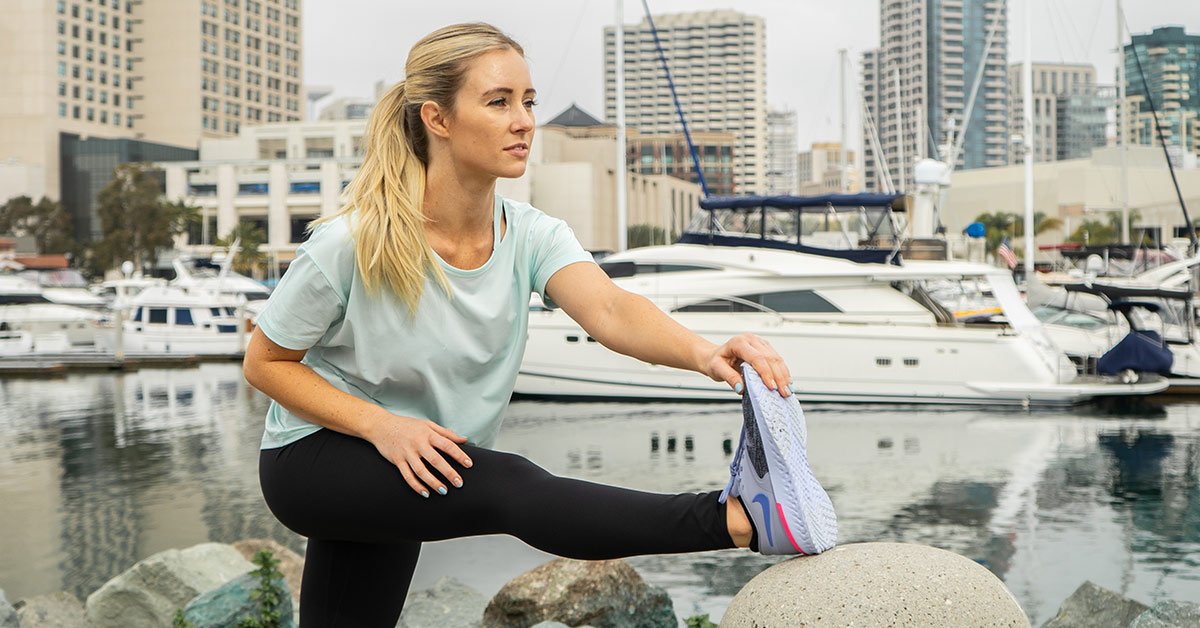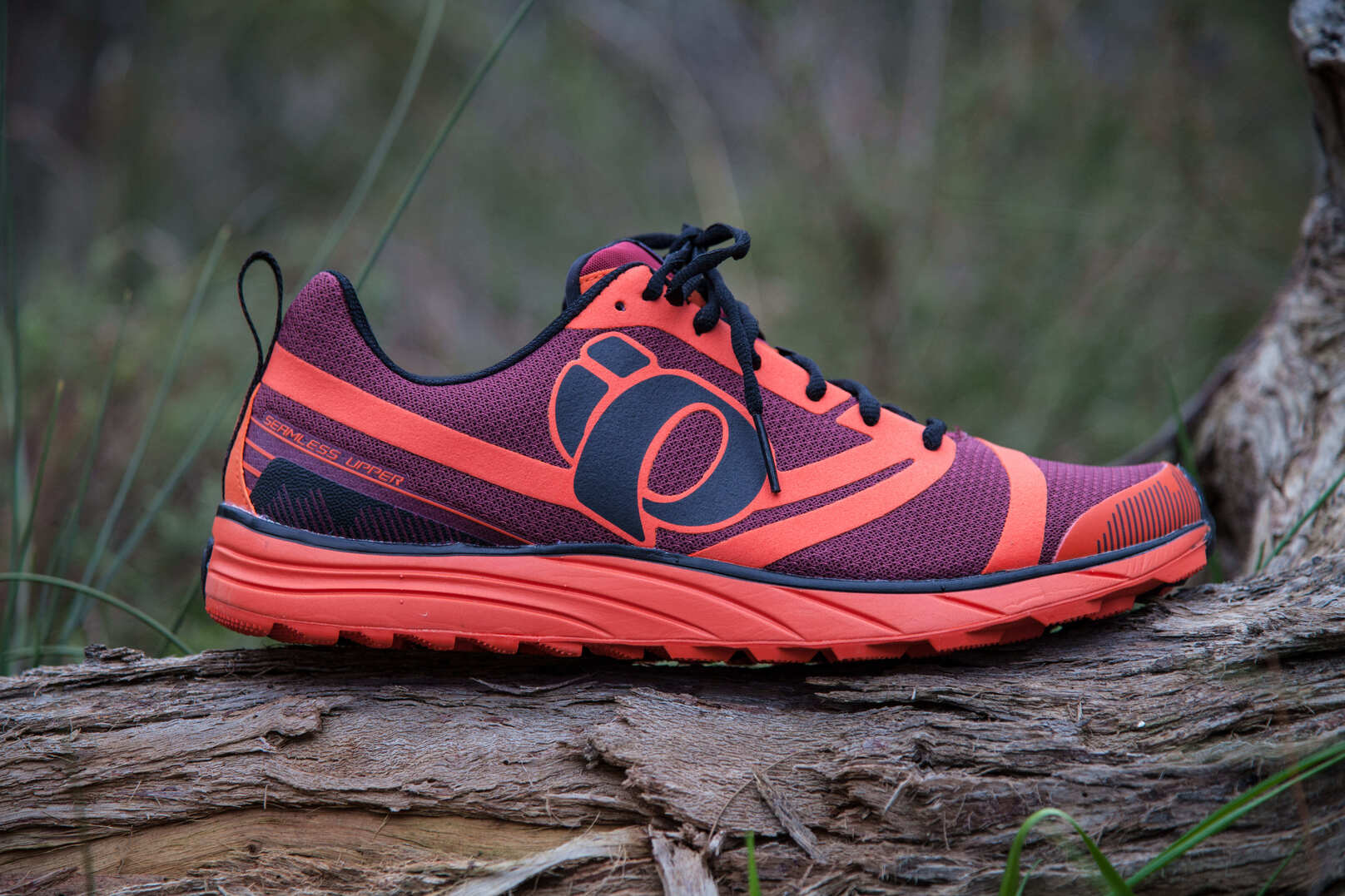Home>Misc>Featured>How Many Miles Should Running Shoes Be Replaced
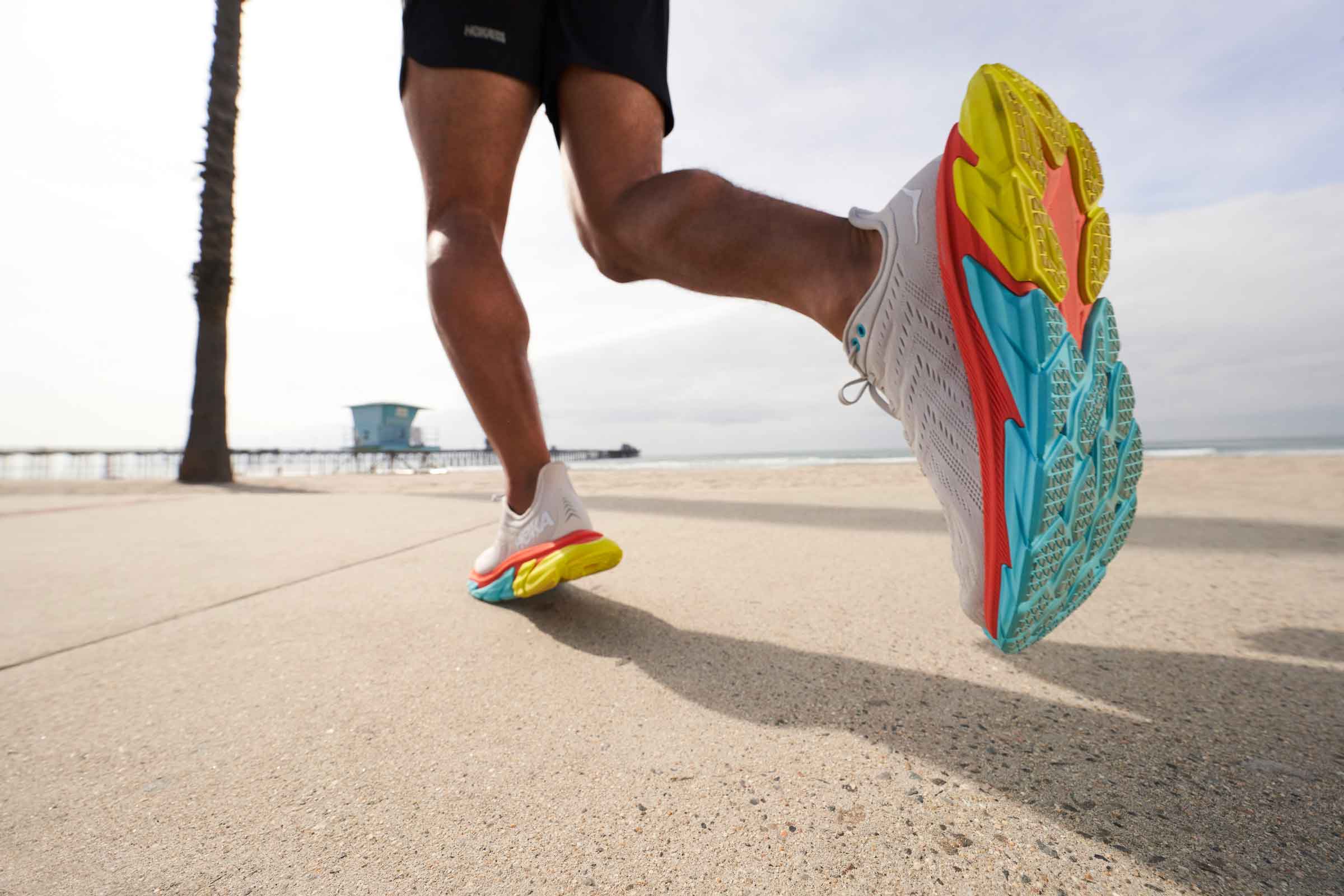

Featured
How Many Miles Should Running Shoes Be Replaced
Modified: January 2, 2024
Discover how many miles you should run before replacing your shoes and keep your feet supported with our featured running shoes. Get expert advice and guidance today!
Introduction
Choosing the right pair of running shoes is essential for any runner, as it directly impacts performance and prevents injuries. However, despite investing in high-quality shoes, many runners often overlook the importance of replacing their footwear at the right time.
Running shoes undergo significant wear and tear over time, especially with regular usage. The constant impact, pressure, and friction on the shoes can cause the cushioning to deteriorate and the outsole to wear down, reducing their effectiveness in providing support and shock absorption.
Replacing running shoes at the right time is crucial to ensure optimal performance, prevent discomfort, and lower the risk of developing injuries. But how do you determine when it’s time to say goodbye to your old pair and invest in a new one?
In this article, we will explore the factors to consider when deciding how many miles running shoes should be replaced and provide some recommendations to help you make an informed decision. We will also discuss the signs of wear and tear to look out for, the different types of running shoes available, and why it’s essential to replace them at the right time.
By the end of this article, you will have a clear understanding of when and why you should replace your running shoes, allowing you to maintain optimal performance and prevent potential injuries.
Factors to Consider
When determining how many miles running shoes should be replaced, there are several factors to take into account. While there isn’t a definitive answer that suits every runner, considering these factors will help you make an informed decision:
- Running Surface: The type of surface you predominantly run on can affect the lifespan of your shoes. Running on hard surfaces like concrete or asphalt tends to wear the shoes out faster compared to softer surfaces like trails or treadmills.
- Body Weight: Your body weight can have an impact on the longevity of your running shoes. Heavier runners put more strain on the shoes, leading to faster deterioration of the cushioning and outsole.
- Running Frequency: How often you run also determines how quickly your shoes will wear out. Regular runners who hit the road or trail multiple times a week will need to replace their shoes more frequently than occasional runners.
- Running Style: Each runner has a unique running style that can affect the wear pattern of their shoes. For example, if you tend to land heavily on your heels, the cushioning in that area may deteriorate faster, requiring replacement sooner.
- Shoe Quality: The quality of the running shoes you purchase also plays a role in their durability. Higher-quality shoes made with advanced materials tend to last longer than cheaper options.
Considering these factors will give you a general idea of when it’s time to replace your running shoes. However, it’s important to understand that these are just guidelines, and individual experiences may vary. Paying attention to the following recommendations will further help you determine when it’s time for a new pair:
Now that we have discussed the factors to consider when deciding how many miles running shoes should be replaced, let’s move on to the mileage recommendations in the next section.
Mileage Recommendations
While there is no exact mileage that applies to all runners, there are general recommendations on how many miles running shoes should be replaced. These recommendations serve as a guideline and can vary depending on the factors mentioned earlier.
On average, most running shoes have a lifespan of around 300-500 miles. However, it’s important to note that this is an estimate and can differ based on individual factors. Some runners may find that they need to replace their shoes earlier, while others may get more mileage out of their footwear.
As a rule of thumb, it is recommended to keep track of your shoe’s mileage using a running app or manual record-keeping. This way, you can monitor the wear and tear and make an informed decision about replacement. If you consistently run longer distances or on more demanding surfaces, you may need to replace your shoes closer to the lower end of the mileage range.
Another helpful strategy is to have a backup pair of running shoes. Rotating between two or more pairs can help extend the lifespan of each shoe and distribute the wear more evenly. This can be particularly beneficial for runners with higher mileage or those training for long-distance races.
Keep in mind that the mileage recommendation is just one aspect to consider. It’s equally important to pay attention to the signs of wear and tear. These signs can indicate that your shoes may need replacement sooner, regardless of the mileage accumulated.
Next, let’s explore the signs of wear and tear that indicate it may be time to replace your running shoes.
Signs of Wear and Tear
While tracking the mileage of your running shoes is important, it’s equally crucial to pay attention to the signs of wear and tear. These signs can give you a clear indication that it’s time to replace your shoes, even if the mileage hasn’t reached the typical range of 300-500 miles.
Here are some common signs of wear and tear to look out for:
- Visible Outsole Wear: Examine the soles of your shoes for any signs of significant wear, such as smooth or bald patches. If the traction of the outsole has worn down, it can negatively impact your grip while running, making it harder to maintain stability.
- Decreased Cushioning: Over time, the cushioning of running shoes will compress and lose its responsiveness. If you feel that your shoes no longer provide adequate shock absorption or cushioning, it’s a definite sign that they need replacement.
- Uneven Wear Patterns: Take a close look at the midsole and outsole of your shoes. If you notice any uneven wear patterns, such as excessive wear on one side or in specific areas, it could indicate an issue with your running form or shoe fit. In such cases, replacing your shoes may be necessary to prevent further complications.
- Visible Damage: Inspect your shoes for any visible damage, such as ripped or torn uppers, loose stitching, or structural integrity issues. These damages can compromise the overall performance and support of the shoe, making them less effective for running.
- Increased Discomfort or Pain: If you start experiencing discomfort or pain during runs that you didn’t feel before, it could be a sign that your shoes are no longer providing adequate support or cushioning. This may be an indication that they need to be replaced.
It’s important to note that the signs of wear and tear may vary depending on factors such as running style, shoe type, and individual foot mechanics. Regularly inspecting your shoes and paying attention to any changes in performance or comfort will help you determine when it’s time for a new pair.
Now that we have discussed the signs of wear and tear, let’s move on to explore the different types of running shoes available.
Types of Running Shoes
When it comes to running shoes, there is a wide variety of options available to cater to different running styles, preferences, and terrains. Understanding the different types of running shoes can help you choose the right pair and ensure optimal performance and comfort.
Here are some common types of running shoes:
- Cushioned Shoes: Designed for runners who prioritize comfort and shock absorption, cushioned shoes provide ample cushioning in the midsole and heel. They are ideal for long-distance runners or those with a neutral running gait.
- Stability Shoes: Stability shoes are recommended for runners who overpronate or have lower arches. These shoes provide additional support and stability to help align the feet and reduce the risk of injuries caused by overpronation.
- Minimalist Shoes: Minimalist or barefoot-style shoes are designed to mimic the sensation of running barefoot. They have a low-profile design with minimal cushioning and a lower heel-to-toe drop, allowing for a more natural running experience.
- Trail Shoes: Trail running shoes are specifically designed to handle rugged terrains and provide enhanced traction and durability. They often have more aggressive outsoles, protective toe caps, and water-resistant features.
- Racing Shoes: Racing shoes are lightweight and designed for speed. They have minimal cushioning and are built for shorter distances or racing events. These shoes are usually reserved for experienced runners looking to improve their performance.
Choosing the right type of running shoes depends on your running style, foot mechanics, and the terrain you primarily run on. It’s important to consider your individual needs and consult with a knowledgeable salesperson or a podiatrist if you’re unsure about the type of shoe that would be best for you.
Now that we have explored the different types of running shoes, let’s discuss why proper replacement is crucial.
Importance of Proper Replacement
Properly replacing your running shoes at the right time is essential for multiple reasons. Neglecting to replace worn-out shoes can lead to a range of issues that can impact your running performance and increase the risk of injury. Here are a few key reasons why proper replacement is crucial:
- Injury Prevention: Running in worn-out shoes can increase the risk of developing injuries such as shin splints, stress fractures, plantar fasciitis, or Achilles tendonitis. When the cushioning and support of your shoes deteriorate, it can lead to poor shock absorption and alignment, putting stress on your muscles and joints.
- Optimal Performance: Worn-out shoes can negatively impact your running performance. The lack of cushioning and stability can lead to decreased efficiency, altered biomechanics, and compromised running form. Investing in a new pair of shoes at the right time ensures optimal comfort, support, and performance.
- Improved Comfort: As shoes wear down, they lose their ability to provide adequate cushioning and support. This can result in discomfort, pain, or hot spots during your runs. Replacing your shoes when they show signs of wear and tear ensures you can continue running comfortably without unnecessary discomfort.
- Correcting Overuse Issues: When shoes deteriorate, they may no longer provide the necessary support and stability to address overuse issues such as overpronation or supination. Replacing your shoes with the appropriate type that caters to your specific foot mechanics can help address these issues and prevent further complications.
- Long-Term Cost Savings: While investing in new running shoes may seem like an expense, it can actually save you money in the long run. Continuously running in worn-out shoes can lead to more severe injuries, requiring medical attention and time off from running. Regularly replacing your shoes can prevent these issues, leading to fewer healthcare expenses and saving you money in the long term.
By recognizing the importance of proper shoe replacement, you can prioritize the health of your feet and ensure you can continue running comfortably and injury-free.
Now that we have discussed the importance of proper replacement, let’s summarize the key points we’ve covered in this article.
Conclusion
Choosing the right pair of running shoes is crucial for any runner, but it’s equally important to know when to replace them. By considering factors such as running surface, body weight, running frequency, running style, and shoe quality, you can make an informed decision about when it’s time for a new pair.
While the general mileage recommendation for replacing running shoes is around 300-500 miles, it’s important to pay attention to the signs of wear and tear. Visible outsole wear, decreased cushioning, uneven wear patterns, visible damage, and increased discomfort or pain are all indications that your shoes may need replacement, regardless of their mileage.
Understanding the different types of running shoes and choosing the right type for your running style, foot mechanics, and terrain can further enhance your running experience. Whether you opt for cushioned shoes, stability shoes, minimalist shoes, trail shoes, or racing shoes, selecting the right pair will provide the necessary support and comfort.
Properly replacing your running shoes is essential for injury prevention, optimal performance, improved comfort, correcting overuse issues, and long-term cost savings. By investing in a new pair at the right time, you can maintain your running form, prevent injuries, and enjoy a comfortable and enjoyable running experience.
Remember, these recommendations and guidelines serve as a starting point, but individual experiences may vary. Pay attention to your shoes, listen to your body, and consult professionals if needed to ensure you’re making the best decisions for your running needs.
So, lace up your new pair of running shoes, hit the road or trail, and enjoy many miles of successful running!
